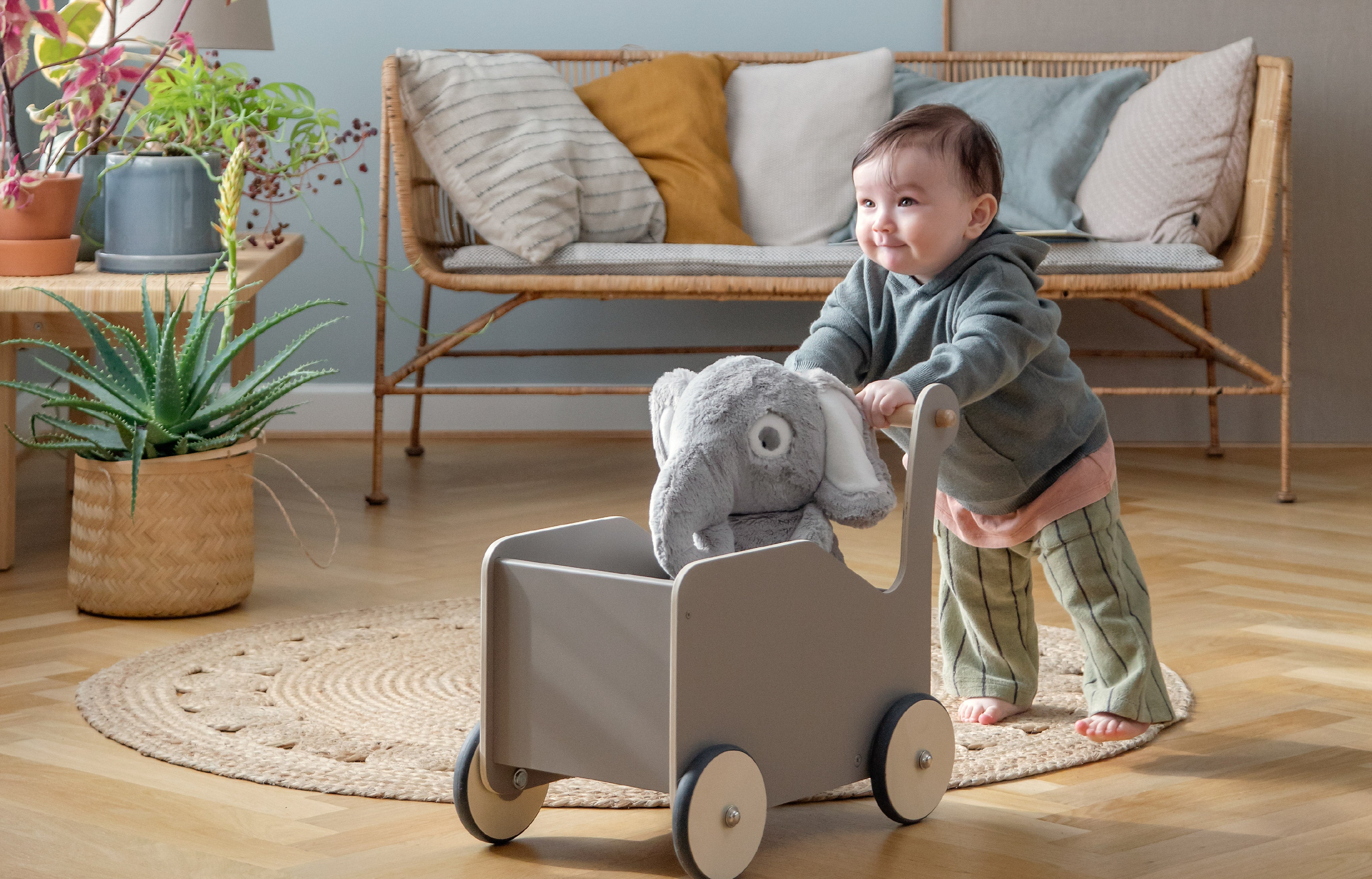Continued Development
Once your baby has taken their first independent steps, a new phase full of possibilities begins. Now it’s about nurturing a love of movement, so your child continues to explore and develop both physically and motorically.
As your child grows, they will need more variation and challenge in their surroundings. You can practice balance by walking along a line on the floor, hopping, kicking a ball, or balancing on one leg.
Some children also benefit from joining an activity or play group, where they can gain new movement experiences and strengthen motor skills in a safe, social setting.
When your baby begins to walk, an entirely new world of movement opens up. Standing up and taking the first steps require strength, balance, coordination, and courage – all built on the foundations from earlier phases.





















